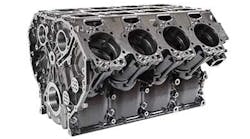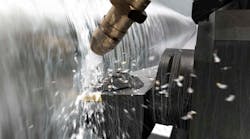Every cutting tool has three primary features, regardless of the process.
Rake angles: Impact cutting forces, edge strength and chip flow characteristics. Approach (lead) angles: Control the direction of cutting forces, provides effective chip thinning and protects weakest part of the cutting edge. Clearance angles: Ensure that the tool can cut without rubbing.
The optimum combination of these angles provides strength for the cutting edge while allowing the workpiece material to flow freely away from the cutting zone. When this happens, cutting forces can be kept low for long tool life.
—Jim Kasperik, CMP, global manager, Kennametal Knowledge Center (www.kennametal com)
Finishing a fillet
“The best way to produce wide cavities (grooves) in heat-resistant materials is by using a grooving tool on the first operation. A grooving tool is selfstabilizing and always moving forward into clean material. This results in efficient machining without tool notching and produces an accurate corner radius. Remove the remaining material by ramp cutting with a round insert.”
—— Greenleaf Corp. (www.greenleafglobalsupport.com)





